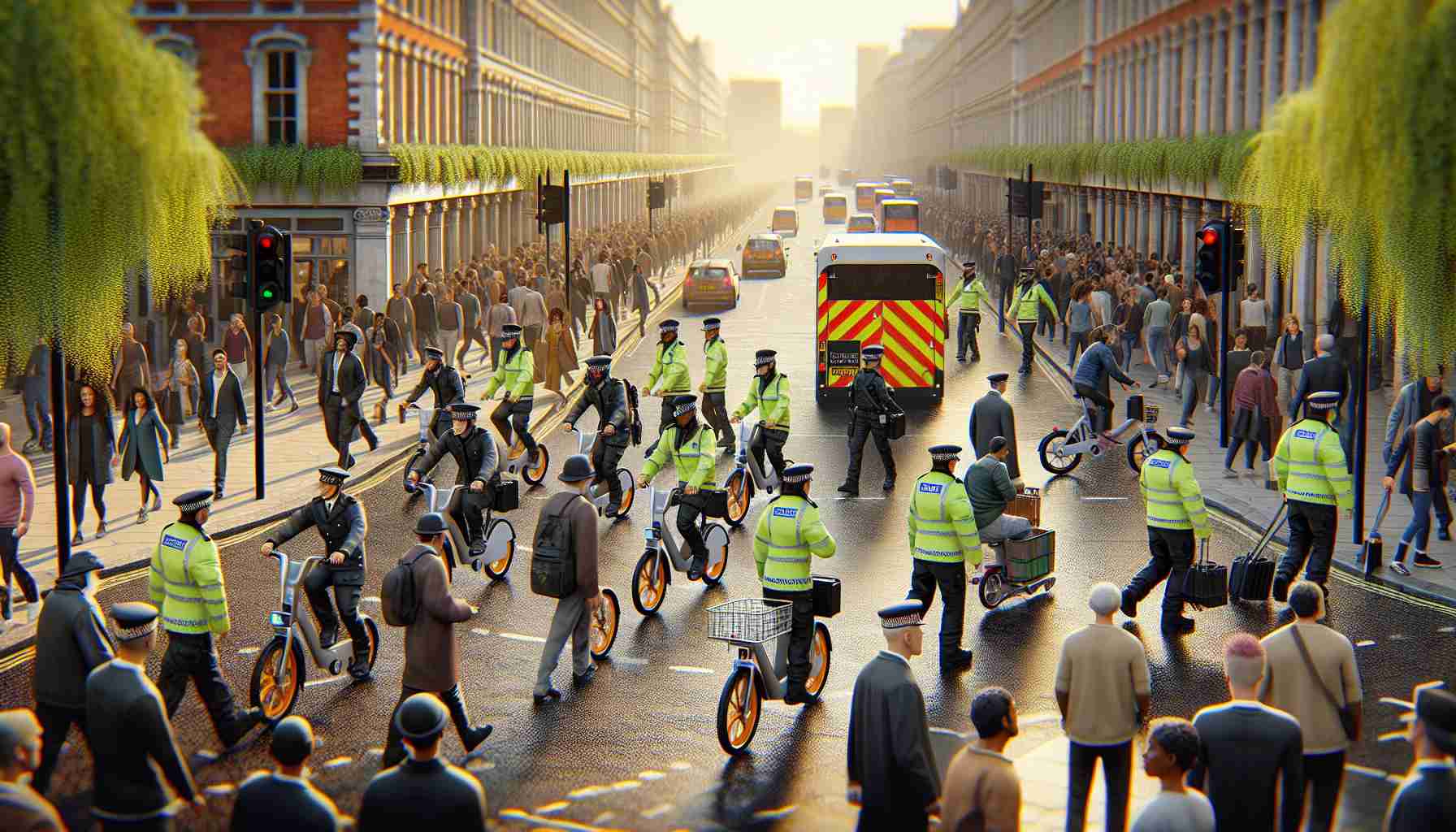London’s sidewalks have increasingly become cluttered with e-bikes from popular rental services like Lime and Forest. With over 40,000 e-bikes scattered across the city, navigating pedestrian areas has become challenging. In response, Transport for London (TfL) is stepping up its efforts to curb the chaos.
New measures aim to streamline e-bike parking across the city’s red roads—key routes managed by TfL that see 30% of London’s traffic despite only making up 5% of the streets. These steps mean e-bike companies could face consequences if their bikes end up parked irresponsibly in these crucial areas.
TfL hasn’t yet specified the exact enforcement tactics, but they promise a “proportionate and pragmatic approach.” Focus will be sharpest on trouble zones where improperly parked e-bikes present major safety hazards and block access for pedestrians.
Councillor Kieron Williams, who champions climate and transport agendas, emphasizes the need for comprehensive legislation. However, he insists current operators must step up and mitigate the inconveniences caused by careless parking now.
Collaboration is key, as TfL works alongside London’s 32 boroughs to enhance parking compliance. Boroughs have introduced 2,000 parking bays this year, with TfL allocating almost £1 million to broaden this infrastructure, planning for at least 800 additional spaces by next summer.
Alongside these initiatives, TfL’s own Santander bikes offer a structured solution, utilizing docking stations to ensure orderly parking. As efforts unfold, TfL aims to improve public space management and ease sidewalk congestion for Londoners.
Is Urban Mobility Leading to Urban Chaos? The E-Bike Controversy
London’s push for sustainable urban mobility faces a paradox: while e-bikes promise reduced emissions and efficient transport, their proliferation invites logistical chaos. As the capital grapples with the e-bike inundation, a fascinating dynamic between technology, urban planning, and public policy is unfolding—spotlighting broader implications for humanity and technological advancement.
The E-Bike Conundrum: A Symbol of Progress or an Urban Nuisance?
E-bikes are at the forefront of a green transportation revolution, offering an eco-friendly alternative to traditional vehicles. However, their unchecked spread poses a series of questions about urban space management and the consequences of technological uptake without robust infrastructure.
How Does the E-Bike Market Affect Technological Development?
E-bikes symbolize progress in several ways:
– **Sustainability**: They contribute significantly to reducing carbon footprints, encouraging cities to adopt cleaner transport solutions.
– **Innovation**: The rapid evolution in e-bike technology, including better battery life and smart connectivity, propels advancements in other micro-mobility sectors.
However, the congestion they create could hinder long-term acceptance and expansion. It raises pivotal questions about the alignment of technological development with existing urban infrastructures and the capacity of cities to adapt swiftly enough.
Interesting Facts and Controversies
– **Environmental Benefits vs. Social Costs**: While e-bikes reduce emissions, excessive urban clutter and safety hazards might lead to unwelcome social costs. Are these costs overshadowing the environmental gains?
– **Collaborative Urban Governance**: TfL collaborating with 32 boroughs is notable. But how prepared are these boroughs in terms of resources and infrastructure to handle this surge effectively? It’s a test for decentralized urban governance.
– **Public vs. Private Sector Solutions**: TfL’s structured Santander bike solution presents an interesting contrast to market-driven rental e-bikes. Does public ownership lead to better outcomes in managing urban mobility?
What Are the Pros and Cons of the E-Bike Explosion?
– **Advantages**:
– **Reduction in Traffic Congestion**: E-bikes can significantly lower vehicle congestion.
– **Increased Accessibility**: They offer a convenient transport option for short distances, enhancing connectivity.
– **Disadvantages**:
– **Infrastructure Challenge**: Cities are struggling to keep pace with e-bike infrastructure demands.
– **Safety Concerns**: Improperly parked e-bikes pose risks to pedestrian safety.
What Does This Mean for Future Cities?
As cities like London experiment with regulating e-bike usage, they set frameworks for emerging urban mobility solutions worldwide. The challenge lies in creating adaptable, scalable infrastructure that accommodates technological advancements without compromising city livability.
The world watches as London navigates this balancing act, providing a potential blueprint—or warning sign—for other urban centers investing in micro-mobility solutions.
For more on how cities are adapting to new transport technologies, explore Transport for London and their initiatives in urban planning and infrastructure development.
